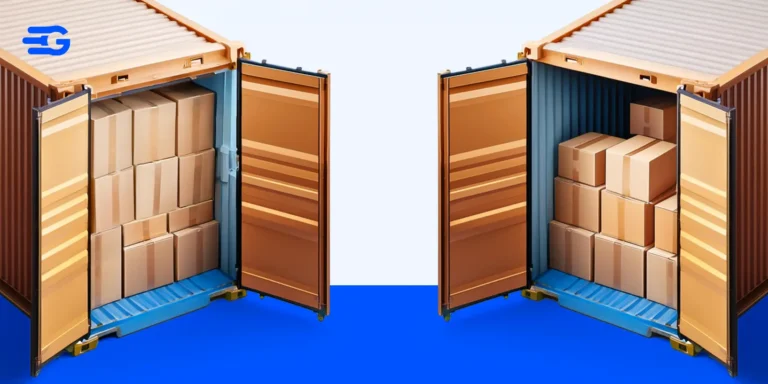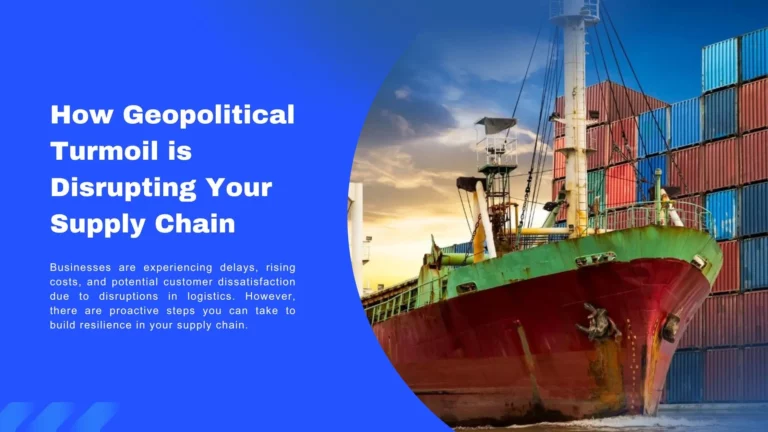The Hidden Cost of Poor Order Tracking: What It’s Really Costing Your Business
The danger with poor order tracking isn’t in the chaos. It’s in the calm. Most delays don’t start with a visible failure. They start when a shipment update is missed, but no one notices because the system doesn’t alert anyone. Teams rely on assumptions instead of confirmations. That’s when control quietly slips.
On the surface, everything appears to be moving. But without real-time visibility, there’s no way to tell whether an order is in transit, sitting idle, or hasn’t even been picked yet.
This false sense of progress causes critical issues to surface too late. One of the quiet ways the cost of poor order tracking creeps in. This isn’t all. Let’s dive deep.
When Visibility is Lost
What makes the cost of poor order tracking so dangerous is that it hides behind normalcy. Everything seems fine at first. Orders have been placed, timelines are locked, and teams are moving ahead with their daily routines. But beneath the surface, something’s missing.
A single status update doesn’t show up. It’s minor, easy to miss, and often ignored. But that one gap quietly sets off a chain reaction. Without reliable order tracking, you lose the ability to react in time.
You don’t know what’s late until someone complains. You don’t know who’s responsible until the situation gets worse. By then, the damage is already done.
In fact, 99% of supply chain professionals say lack of in-transit visibility is their top concern, especially for road and ocean shipments
Here’s what starts breaking down once order tracking fails:
- Clients grow impatient and start doubting execution: If a delivery misses its deadline and no proactive update is given, customers assume the worst. In their mind, if you’re not tracking their order, you’re not managing their account. And if they can’t trust you with timelines, they start questioning the bigger things too.
- Costs increase silently: Businesses often respond to uncertainty with overcorrection. If no one knows whether the shipment is delayed, someone might expedite another one just to be safe. Sometimes orders get duplicated, sometimes expensive freight is used unnecessarily. These decisions are made in the dark, and the cost builds quietly across the supply chain.
- Coordination across teams collapses: Different departments rely on different assumptions. Procurement department thinks the shipment is in transit. Logistics hasn’t heard from the carrier. Sales is still promising the original delivery date. With no shared source of truth, everyone is left operating in silos, reacting based on incomplete or outdated information.
- Internal trust weakens: When issues come up and no one can trace the root cause, blame starts circulating. Was it the supplier? The forwarder? Internal ops? Without accurate order tracking, accountability becomes opinion-based. People start playing defense instead of solving the problem.
- Operational flow slows down: One delayed order affects the rest. Teams can’t plan around what they don’t know. Prioritization gets messy, and resources end up tied to follow-ups and manual checks. Progress stalls because no one wants to move forward without confirmation. And the cost of poor order tracking keeps rising.
If you think about it: the real risk isn’t just the delay. It’s the uncertainty. Once you lose visibility, you also lose the ability to act early.
And by the time it becomes obvious, you’re already spending more, delivering less, and explaining things you shouldn’t have to.
What It Really Costs
The real cost of poor order tracking often shows up as scattered issues like a missed delivery here or a rushed shipment there.
But underneath, the cumulative cost runs deep.
Every time someone manually follows up for a status update, that’s time taken away from higher-value work. Every late shipment that needs urgent freight adds to logistics spend.
And when operations slow down due to uncertainty, the opportunity cost of delayed decisions becomes significant. These aren’t visible line items on a balance sheet. But this is exactly how the cost of poor order tracking quietly eats into margins.
Another layer of the cost of poor order tracking is reputational.
A single delay might be forgiven, but repeated gaps in visibility make clients question your reliability. When customers start buffering for your errors in their own planning, it’s a sign of lost confidence. You go from being a trusted partner to a risk that needs managing.
One global pharma company learned this the hard way: Manual processes led to repeated invoice errors and escalations. After switching to GoComet, they enabled error-free freight invoice processing and streamlined their internal operations at scale.
Where Traditional Tools Fall Short
To put it simply, in traditional tools: information exists, but it’s scattered and stale.
- Spreadsheets are only as good as their last update: They don’t alert. They don’t refresh. They don’t sync across teams. If someone forgets to update a field, no one knows. And most teams don’t realize the data is stale until the cost of poor order tracking becomes visible.
- ERPs aren’t built for day-to-day tracking: They store information, but they don’t surface delays in real time. Finding a single order’s status might take multiple clicks across modules, and by the time you have it, the situation may have changed.
- Email chains lack accountability: Status updates sent over email depend entirely on people. If a supplier forgets to respond, or a key message gets buried, there’s no backup. No audit trail. No system-led follow-up.
- There’s no single source of truth: Each team trusts its own version of the status. Sales has one view. Logistics has another. Suppliers have a third. And without real-time alignment, decisions become fragmented.
The Turning Point
Eventually, the pattern becomes too obvious to ignore. Delays keep happening, teams stay reactive, and the cost of poor order tracking keeps showing up in different forms. No one has real answers. It’s not a people problem. It’s a visibility problem. That’s when the business decides to stop guessing and start tracking properly.
That’s when GoComet comes in. Our order management tools give companies real-time control over shipments, supplier updates, and internal coordination (without needing to overhaul existing systems). It replaces scattered tracking with one unified source of truth.
| Problem Area | Before GoComet | After GoComet |
| Order Tracking | Scattered updates and manual follow-ups | Real-time tracking with full visibility |
| Internal Coordination | Gaps between teams and delayed communication | Instant alerts and shared timelines |
| Supplier Sync | Last-minute calls after issues arise | Smooth, proactive coordination with all stakeholders |
| Cost Management | Unplanned freight, duplicated orders. | Predictable costs through early planning |
| Decision-Making | Reactive and assumption-based | Fast, data-driven, and timely |
Once the system is live, the shift is immediate. Teams stop chasing updates and start making informed decisions. Delays that used to take hours to detect now trigger alerts within minutes. That alone cuts down response time and prevents unnecessary escalations.
Suppliers know what’s expected. Clients stay updated without asking. And internally, teams finally operate with a shared view. That removes confusion and helps everyone prioritize the right things, faster.
More importantly, order tracking is no longer a passive process. It actively supports business decisions, reducing the cost of poor order tracking before it escalates. When visibility improves, confidence improves. And with that, relationships become stronger, and operations move smoother.
A 134-year-old global print company saw this shift firsthand. Before GoComet, tracking was fragmented and reactive. With real-time visibility in place, they revamped their tracking process profitably, reduced delays, and made decision-making faster across teams.
So, all in all, everything from delayed decisions to customer churn can be attributed to one root cause: the cost of poor order tracking left unchecked.
Bottomline
In the end, the cost of poor order tracking goes beyond simple delays. It’s an insidious drain on time, resources, and trust. Even when things look normal at first, a single missed update can unleash a chain reaction that affects everyone from operations to customer care. The quiet impact grows until the business feels the weight of every small disruption.
The good news: fixing it doesn’t require an overhaul. Just the right system. And GoComet brings clarity just where it’s needed most. If you are ready to move from follow-ups to complete control, Book a demo to see how you can eliminate the cost of poor order tracking from your operations.





